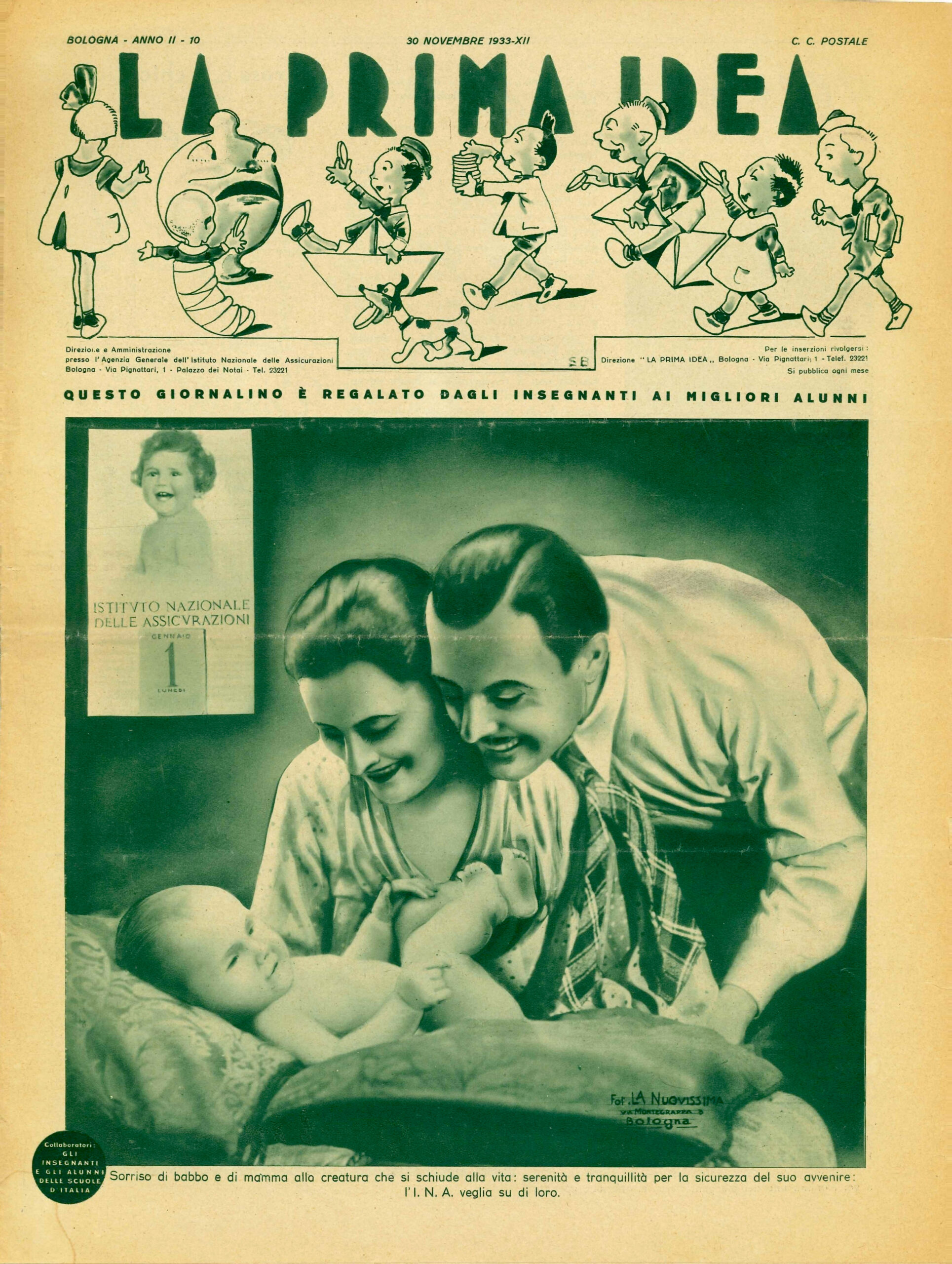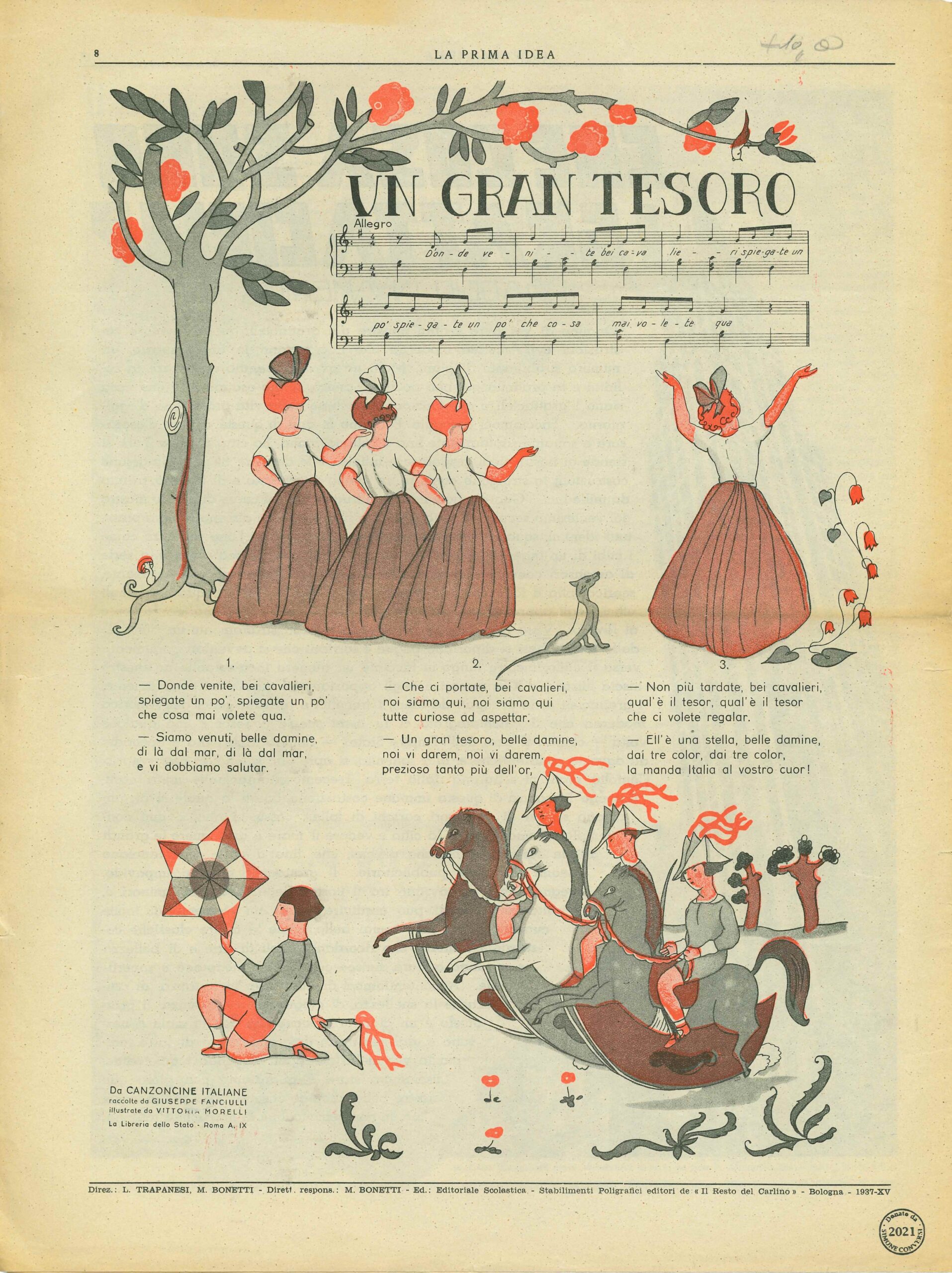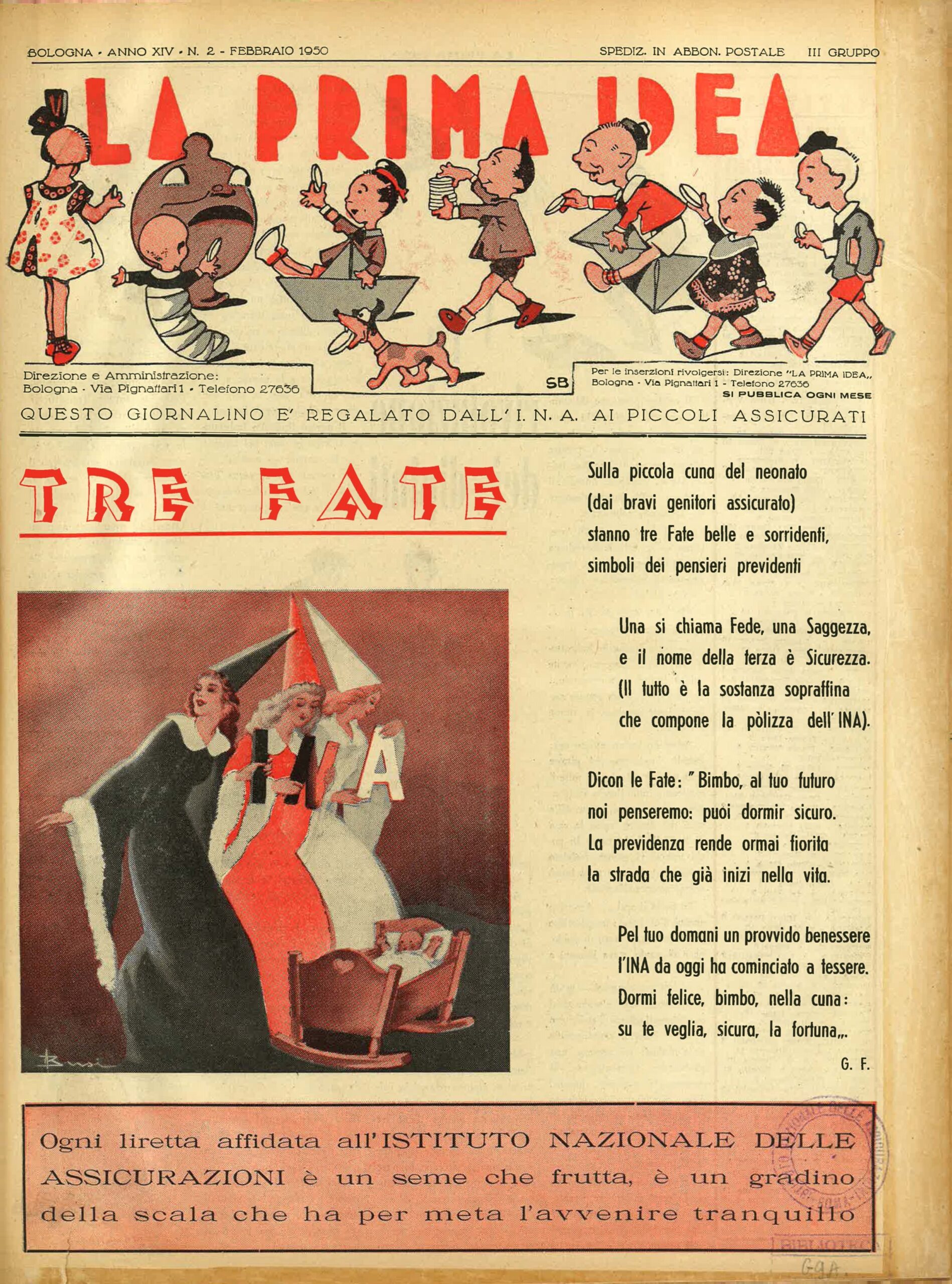New Pages of the Children and Young People’s Magazine, La Prima Idea
28 July 2022
La Prima Idea (The First Idea) was a monthly magazine for children and young people, an insuring marketing periodical. Published for almost twenty years between the 1930s and 1950s, albeit interrupted during the war, it was printed in Bologna and distributed for free through schools around the country. The editorial staff was based in the general agency of the Istituto Nazionale delle Assicurazioni (INA) in the capital of the Emilia-Romagna region, in Via dei Pignattari on the renowned and very central Palazzo dei Notai building (which has been part of the INA’s real estate holdings for a long time). Only five editions of the magazine were conserved at the INA Assitalia Historical Archive, from 1949-1950, images from which had already formed part of important internal editorial initiatives such as the book INA Arte del Manifesto: 90 anni di storia sociale (INA: Art of the Poster: 90 Years of Social History, Generali Publishing). Today, following donations and purchases, the INA Assitalia Historical Archive has come into possession of various new editions of La Prima Idea dating back to the thirties and early forties. These provide us with valuable further detail into the history of this remarkable magazine that adapted to changing times to overcome fascism and see itself revived at the dawn of Italian democracy.
Publication started in late 1932, seemingly following an initiative by the INA general agent in Bologna; the first issue in the archive is from February 1933: this edition, unlike its successors, is in black and white on pink paper and does not have numbering inside; it is also of smaller dimensions (21.5 cm x 31.5 cm). All the features of the later editions can also be found here however: school participation - “in collaboration with the best teachers in Italy” -, short stories, cartoons, crosswords, competitions, and of course advertisements for the INA Group. It is from 1933 that the magazine took the form that it would then retain: a larger format (29 cm x 38.5 cm), vibrant colour print, letterheads with children putting spare change in the piggy bank - letterheads and drawings by Sergio Burzi that were changed only in wartime - and a gradual increase in INA publicity materials. In 1937, an important change was made to the letterhead: it went from “This magazine is the teachers’ gift to their best alumni” to “This magazine is a gift from INA to its young policyholders”. The printing data, meanwhile, reveals numerous interesting pieces of information: between the beginning of publication in 1932 until its presumed end in 1950 - publication appears to have already been suspended in the pivotal year of 1943 (the 12th year of the magazine) only to reappear in 1949 as the 13th year, marking the end of the hiatus - the editor in chief was Luigi Trapanesi, who would later be supported by Mario Bonetti, replaced after the war by O. Masi; the first editions were printed at the Tipografia Luigi Parma printsetter in Bologna, and later at the Stabilimenti Poligrafici Riuniti where Il Resto del Carlino was published, first in Piazza de’ Calderini 4 and later in Via Gramsci, in buildings that belonged to the INA for many years. The footnotes even carry the name of the publisher: «S. A. Editoriale scolastica».
The contents are naturally educational, with an emphasis on the subject of the INA’s insurance savings, laid out in collections, novellas, poems, songs and even short scenes of dialogue, a kind of theatrical intermezzo: large amounts of space were also dedicated to matters of interest to the regime: Italianità, history, scientific discovery, the construction of new cities, large building projects, self-sufficiency and reporting from the colonies and the empire (one feature was entitled “Africa Nostra”, i.e. “Our Africa”); recurring characters included Polizzino and Moschettino. The children’s perspective is also expressed in the first feature “Le lettere di Gianni”, and the editors of La Prima Idea are quick to respond to their young interlocutor. The texts are almost always accompanied by vibrant cartoons and sketches, occasionally from comic strips (some of which bear the signature of Adolfo Busi). The signatures of many men appear here, some of whom are already known from other publications of the Institute (Famiglia Nostra and La Buona Semente). Some of the most commonly recurring ones include: Andrea Badini, Bruno Biancini, Giovanni Falzone, Mario Sandri, Mario Bonetti, Giorgio Gostini, Italo Cinti, Ostilio Lucarini, Sergio Burzi, Mario E. Pozzi, the pedagogist Nazareno Padellaro, Primo Piovesan, Teodosio Capalozza (already at the time a collaborator with Il Giornalino della domenica and Corriere dei piccoli), Mario Giusti (a well-known author of children’s literature) and an incredibly young Enzo Biagi, author of a cute sonnet: It is a long tale, a great story / Told to me by my grandfather one evening /- I: the dawn of life, he: the sunset – / After reciting the prayers.
Alongside them were also numerous female voices: Italia Barnabò, Anna Fineschi, Maria Luisa Mattioli, Elena Mela, G. Loreta, Anna Maria Proclemer and Renata Viganò.
The adverts of a bygone age are also a source of fascination: sugar, for example, was held up as being of vital nutritional value for children’s growth.







